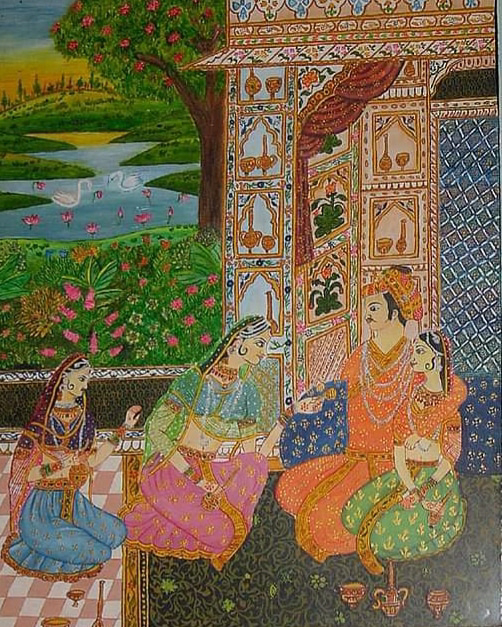Life in Sikkim - Part 2
So finally we reached Bagdogra airport in Siliguri on 8th April. Our driver had arrived at Siliguri on the previous night itself and had reached the airport well 2 hrs in advance before our flight. That certainly was not a sign of coldness towards Indians. We met him at the airport and we started off for Ravangla, a distance of approx 5 hrs. Siliguri has changed a lot in 2 yrs and the traffic worse than a metro city. It took about 2 hrs to reach Sevoke, which was just a 30 min drive 2 yrs ago. Those 2 hrs gave us ample time to interact with the driver. He was a smart, young and we found him amiable. He was a local of Sikkim (Ravangla to be precise) and seemed to be a pleasant and cheerful person. By the time we reached Sevoke, we were sure we would like to have him drive us for any futire visits to Sikkim and he readily agreed as well. He said he can also get the permits done for us from Gangtok should we want to travel to North or East Sikkim. If there was any truth about the Sikkimese lack of warmth towards Indians, this guy was certainly an exception and we couldn't be more glad.
After about 4 hrs we entered the Sikkim border, near the merger of the 2 rivers Teesta and Rangit. And as if by a magic wand, we seemed to be in another land altogether. Colorful houses, even more colorful rows of flowers around every house........ the place must certainly have a happy demeanour. The landscapes were breath taking and every frame was a picture postcard in itself. For the first time in life, I was seeing a place not notified as a protected forest, yet so green and colorful. By then we were friends with the driver and he seemed to be enjoying our company as well. It was his first experience, driving birders and he kind of seemed intrigued.
As we approached Ravangla, it was about 5 pm. The weather was cool and getting colder and the roads were winding with hairpin bends. School kids of all ages seemed to be headed home. One could instantly see the difference from their urban counterparts. Not only did they look much smarter and extremely well dressed, what stood out was that they looked cheerful and happy. Neither were they carrying the huge bags like the urban kids but just some sleek folders. But what was most surprisng was that some were really tiny tots maybe aged 3-5 yrs, walking alone in groups of twos and threes, not escorted by parents unlike what we see in Mumbai. No cars or vehicles either. We asked the driver, how and why is that? He said, why do the parents need to escort them? Safety? we asked. Narrow roads, hairpin bends, vehicles going up and down.......and the biggest risk humans? Don't worry madam he said. As for risk from humans, Sikkim is very safe and nobody needs to worry of any harm to anyone. Talking of roads, bends and traffic, it is the way of life here and kids are well used to it. Wowww, haven't heard this assurance of safety anywhere yet!!! Then suddenly, I saw small girl, go downhill from the side of the road, along what looked a steep goat track, alone, looking very self assured and where I do not know. See? I said. How that girl is wandering inthe absence of parents. What if she gets lost or hurts herself? She isn't loitering ma'm, he said...her house must be down the hill somewhere. Gasp!!! And she goes up and down these goat tracks alone, everyday? Yes ma'm, and our kids are very sure footed, they won't slip or fall. Gosh, I would never have the guts to walk down that track even if I were held by hand!! Half an hour later, I still saw some kids walking along, in the same uniform, which meant they were from the same school. Yes, he said again - kids here walk long distances to and fro from school. Intitally I wondered why, but got the answer on looking around. Unlike what we see in rest of India, here there weren't clusters or rows of houses anywhere but one would see a single house every 100 metre or so. With the population being so low, obviously there wouldn't be many schools and certainly not near the kids' homes. Yet, they seemed so happy and smart. Our urban kids with all the material comforts and overprotective parents seem a sad and burdened lot.
Over the next 2-3 days we were getting used to seeing the colorful houses, the flowers all around, the cheerful kids and a generally non chaotic pace of life. I suddenly realised- hey we aren't seeing any overweight or obese people here- not even kids!! Yes, you are right my friends said. Or maybe we have not noticed since we are so busy looking at the beauty all around? Maybe. Ok, lets keep a watch today. 4 pairs of eyes remained alert but it was true. There was no problem of obesity there. Why? The answers were to come over the next few days. On day 3, the earlier driver who had met with an accident called up to say that he was back in Ravangla from the hospital. Of course he sounded completely shattered but had called to ask where and how he could return our advance of Rs 5000. I was at a loss at how to console him and told him the money didn't matter and he should look after his health. I told him that artificial limbs can get him back to life over a period of 2 years or so and if I get to know of any govt hospital where he could get it done for free or at minimum cost, I would let him know. I don't have any answer yet and although I have often thought of calling him up many times to enquire about him, I don't know what to tell him.
Just like the kids walk long distances everyday, life isn't easy for adults too. Long distances have to be walked to get the daily provisions and then if your house is up the hill, you got to carry it up too. But why would anyone then stay atop a hill? Why not have a house at road level? As it turns out, Sikkim hasn't retained its greenery by sheer chance. One- nobody others than native Sikkimese are allowed to own land and build a house. Two- even the Sikkimese cannot just buy any piece of land and build a house. The land that they have inherited is theirs and the house must come up only on that. The rest of the land is government owned and nobody dare indulge in land grabbing. Wowww, wowww- in a megapolis like Mumbai, we haven't been able to put a stop to land grabbing. Again the daily provisions are not easy to come by. There are few shops amid the settlements and these shops procure the goods from Gangtok. Suddenly I realised, what about fuel? Do they also carry gas cylinders up the hill? And are they able to get regular supplies here? No, our driver said. Yes we own gas cylinders but we use a single cylinder for as long as year because we use it sparingly. So what about the rest of the year? We are allowed to cut wood under the strict supervision of the forest officers and there is no haphazard log cutting. And you carry all the wood up the hill too? Yes! How do you manage during the monsoon? The tree cutting happens only in summer and we cut and store enough for the year. The forest rejuvenates in the rain. This is indeed great respect for natural resources I thought to myself.
So what is the livelihood? Most people grow cardamom and ginger. This is sold to traders who ironically are not the Sikkimese and are based at Gangtok. The traders sell these in the market. Then some like our driver, are drivers. Locals generally own no vehicles and these drivers are an important lifeline when provisions are to be brought, to ferry people. Of course tourism being popular, these drivers and vehicles earn well for the year druing the tourist season. Again here we noticed, any passing vehicle is stopped with a show of hand to ask for a ride and the rates are fixed. Some offer home stays to the tourists which is another source of livelihood. At places like Yuksom which are popular with trekkers, many locals are porters and accompany the trekkers, besides rearing horses and cattle. Education is considered imp here and most people are literate, with English being the medium of education.
Our experience with hospitality? Excellent!!! Very warm people, greet you with a smile and well the Sikkimese momos are yummm. One can never be too full to have a plate of momos. And our driver......with us he too got into birding :). Initially he seemed just intrigued at what we were doing, then started getting out of the vehicle with us to see what birding is about, then got interested in looking at the pics I was clicking and then also wanted to have a look through the binocs. By the end of 10 days, he was not only helping us with spotting birds but had become the kind of driver any wildlife photographer would ask for. To drive slow in the first and second gear, watching out for birds while driving, stopping immediately as soon as we said 'STOP', most importantly positioning the vehicle perfectly. He would wait patiently for long hours while we birded, without complaining once. If we said come at 5 am, he would be there in the chilling cold. He would ensure there was enough water in the vehicle for us, would care for our bags while we were busy birding, was willing to escort us if needed. Did not ask us even for a penny until the last day - 'pay me at the end of 10 days ma'm' he told us when I asked him on the first day.
Sikkim - I will come again and again. Wish I had some Sikkimese ancestors so that I could own a piece of land and build a house in that paradise.
Link to the pics https://plus.google.com/u/0/photos/+DrSangeetaDhanuka/albums/6143453501154850705



Comments
Post a Comment